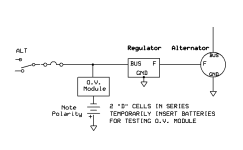Freemasm
Well Known Member
Was going to start a poll but guess I can't without a badge. I prefer to support below the RADAR.
This is not an electrical architecture philosophy debate.
Your related responses to the following would be appreciated:
- I test my crowbar regularly (at least annually). Never detected an issue
- I test my crowbar regularly. Have discovered issues
- I don't test/didn't know
The basis for this comes down to the Garmin LRUs with redundant power inputs for second power sources; not those with additional inputs because of pin current limitations. Some here do not advocate because of voltage spike fears. I'm trying to gage that potential risk. Much thx.
This is not an electrical architecture philosophy debate.
Your related responses to the following would be appreciated:
- I test my crowbar regularly (at least annually). Never detected an issue
- I test my crowbar regularly. Have discovered issues
- I don't test/didn't know
The basis for this comes down to the Garmin LRUs with redundant power inputs for second power sources; not those with additional inputs because of pin current limitations. Some here do not advocate because of voltage spike fears. I'm trying to gage that potential risk. Much thx.





